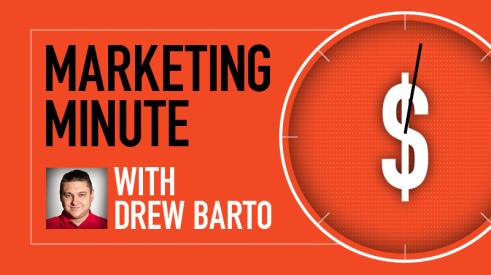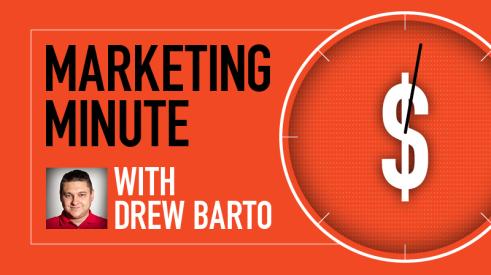In 2006, an industry survey was produced which showed that only 63 percent of companies within the home improvement industry collected leads off their website. Even more telling was the fact that on average less than 5 percent of these leads were ever sold.
However, at the time, this was not a significant indication of failure, as lead sources from other areas more than compensated for this deficiency.
In 2012, the average company that produces these numbers will be out of business in less than two years. The model for a successful home improvement company changed long ago, and one of the core elements is a website that drives leads.
So how do you drive leads on your website? It’s not complicated, but it involves thinking outside the box.
Opposite of what you may believe, there needs to be a higher value placed on substance than style. You can have the best-looking, most dynamic website in the world, but if your customers cannot find it, and it does not generate leads, then all you are doing is increasing your marketing costs.
Step 1: Focus on a Clean Website Navigation
For many years, the rule of thumb with a remodeling website was to pack as much information as possible onto the home page so the customer could make an informed decision on their purchase.
While the reasoning behind this is sound, it led to numerous websites that had the unintended effect of confusing customers and prospects.
A more effective strategy is to create a website with an easy to follow navigational structure whereby your visitors can easily find the information they are looking for on a specific page. Remember, open space on a website can be a good thing — it assists in creating a more organized appearance.
Step 2: Properly Optimize Your Website
Our industry continues to get more competitive and fragmented, and because of this you are in a constant battle with your competitors to get found online. So take the time to optimize the content on your website.
Your site should be listed on the first page of Google for every relevant keyword that applies to your business, because most consumers will not explore past this when researching products and services. In order to do this:
1. Utilize keywords and key phrases that are attributable to what you offer your customers. For example, if you sell replacement windows in Memphis, Tenn., a relevant key phrase would be “replacement windows Memphis.” One word of caution — make sure your Web developer uses these keywords in the title tag, header text, meta description, and in the actual site copy.
2. Constantly update the content on your website. Search engines like Google place a high value on information that is recent.
Step 3: Develop Relevant and Enticing Calls to Action
What are you giving your customers as an enticement to give you their contact information? Do not offer a “Free In-Home Estimate” — this is both generic, and as Chris Behan, president of Socius Marketing states, a “conversion killer.” Behan continues that “in order to entice your website visitors to contact you, it’s very important to have varied calls-to-action to overcome their unique objections.”
Try offering your website visitors something that makes you stand out from the pack. If you sell roofing, an example of an excellent giveaway would be a free whitepaper entitled “The 7 Critical Factors to Extend the Life of Your Roof.” This serves the purpose of being both original and applicable to the product that you sell.
Two critical reminders:
1. Any calls to action that are intended to obtain contact information need to be placed “above the fold” so the capture visitor does not have to scroll down to see it.
2. Keep in mind that the more contact information you ask for, fewer people will fill out your forms. We recommend asking for no more than the prospect’s name, phone number and e-mail in your primary call to action.
Step 4: Produce Content that Keeps Prospects on Your Site
The expression “content is king” is never more true than when it comes to websites that generate leads.
Tom Audette, business development director at Three Deep Marketing, points out that “50 percent of website visitors leave within eight seconds. You literally have to grab their attention within this timeframe or they will be gone.”
You accomplish this with calls to action, but also with strong imagery, videos, and interactive content. You need to be taking high-quality photographs that give the prospect an idea of the level of service that your company provides (i.e. product samples, before and after photographs).
There should also be video content throughout your website. Get a video testimonial from every satisfied customer in exchange for a gift card to their favorite restaurant. Post video clips of your installers in action. It has been proven that a website replete with video will keep visitors on your website an average of 30 to 45 seconds longer. This will make a significant impact on lead generation.
Finally, let your customers and prospects participate in the “website experience.” Add a blog to your site and keep it updated with content that encourages responses from the public.
If you sell an array of different products in the home, consider adding a “customizable design center” where the prospect can mix and match between different options so they can get an idea of the look and feel of your products once installed.
Step 5: Incorporate Social Media
Speaking of interactivity, there is no better resource to communicate with your customers and prospects than social media. Post social media icons prominently on your website so people can connect with you and receive product updates, specials, and other news that pertains to the services that you offer.
Step 6: Avoid Follow-up Failure
Once you start to generate leads on your website it is vital to stay in front of your prospects. According to Gartner Research, 72 percent of companies stop following up with a prospect after the second contact; however, on average, it takes five contacts or more to close 81 percent of prospects.
The lead that you receive on your website is generally what is referred to as “nebulous,” meaning that it is indefinite and may take some extra finessing on your end to close. The prospects that you have acquired in your database are highly valuable and should be treated as such. Touch them with as many different forms of marketing as possible. Phone calls, e-mails and direct mail solicitation should all be used, as different people favor one method of marketing communication over another.
Step 7: Track Everything
If you go through these first six steps, and don’t analyze how your lead sources are performing, then you might as well be flushing your marketing dollars down the toilet.
According to Ken Greene, vice president of Bring Me My Leads, there are several questions that you need to ask:
• What’s working and what is not working?
• What is your lead cost for each Internet strategy?
• Are you reviewing your “goal conversions” in your analytics every week?
• Do you know how many leads your website is generating?
If you are not utilizing Google Analytics in your company, then you are at a loss to answer these questions effectively. By simply installing a tracking code on your website, you will be able to see how many visitors you are getting, the amount of time they spent on your site, how many pages each visitor viewed, what pages on your website people are exiting from, the percentage of returning visitors vs. new visitors, and much more.
This seven-step process is not an absolute in determining the success of your website, but if it is combined with a strong mix of online and offline marketing strategies, you will begin to capture leads and convert sales online.
Our industry has changed significantly from where it was six years ago, and it will continue to do so. As a home improvement company you have two choices: adaptation or extinction. PR
--
Brad Yoho is the director of marketing for Dave Yoho Associates, the oldest, largest, and most successful consulting group serving the home improvement industry. For more information on Dave Yoho Associates call (703) 591-2940 or visit www.DaveYoho.com.
Is your website driving customers away?
Add new comment
Related Stories
How to Get More Leads with a Stronger Remodeling Brand
Discover how to build a strong brand for your construction company, and learn key strategies to differentiate and attract better leads
Building A Small Projects Division from the Ground Up
Through hard work and careful strategy, Harth Home Services has seen big growth
Helping Remodelers 'Get Their House In Order'
From remodeler to NARI executive to industry consultant, Diane Welhouse uses her expertise to help business owners
Finding Success Online and on the Jobsite
The Molitors started with humble blog beginnings, and now the couple runs an unlikely two-folded business for social media marketing and design-build construction
How Much Are Window and Roofing Contractors Spending on Marketing?
Director of Home Improvement Drew Barto reveals the percentage of revenue replacement window, door, and roofing contractors of various sizes are spending on marketing in 2023
4 Things for Remodelers to Understand About Google Analytics 4
The new era of Google Analytics is here, and it's set to help you make better marketing decisions through in-depth metrics
The Empty Chair: Customer Experience Will Differentiate Your Business
With all signs pointing to a softer market, how can remodelers remain strong and different from the rest? Pro Remodeler's Director of Content Erika Mosse shares real examples.
Marketing Minute: How to Overcome a Drop in Demand
Director of Home Improvement Drew Barto shares tips on how to survive and thrive in periods of lower demand for your products or services
Do You Have a Healthy Marketing Mindset?
Use your marketing calories wisely and form healthy habits today to keep your business in shape












